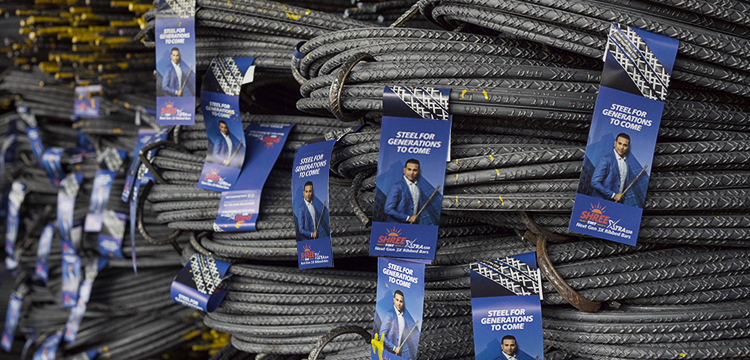5 Remarkable Innovations in Steel that are Elevating Construction Trends
In the evolving world of construction, steel is quintessential in enhancing structural integrity, and versatility in construction. Innovations in steel can be traced back to the 6th century B.C. when cast iron was first used in construction. However, remarkable breakthroughs in technologies and methodologies have since then, revolutionized steel structures, pushing the boundaries of engineering excellence. The strength and stability of any steel structure are defined by the components that bind it. Innovations in steel are reshaping construction trends by providing efficient and resilient solutions that redefine the very nature of structures. Some of these notable innovations include:
1. Reinventing Reinforcement:
Precision engineering aids in the production of steel bars that offer unparalleled strength, ductility, and corrosion resistance. The groundbreaking rib-on-rib feature is a product innovation that improves the bonding of steel and cement. This precise rib cutting eradicates the potential for manual errors and ensures that structures stay resilient in the face of extreme conditions, while reinforced concrete structures’ load-bearing capability is increased. This invention not only makes buildings safer but also makes construction processes more efficient.
2. Prefabricated Steel Components: Precision in Assembly
Prefabrication techniques are revolutionary in enhancing the versatility of steel structures and have grown popular, with the industry growing at a rate of approximately 6-7% annually, with steel taking a central role. Steel components, such as beams, columns, and trusses, backed with advanced welding technology, are being manufactured with precision in controlled factory environments and then transported and assembled on-site. This reduces the need for on-site labor, minimizing site congestion and waste, while ensuring higher quality standards. This results in efficient and cost-effective construction methods that push the limits of architectural design.
3. Sustainable Coatings: Prolonging Steel’s Lifespan
Innovations in surface treatment technology are extending the lifespan of secondary steel components. Environmentally friendly protective coatings and galvanization techniques, such as zinc-rich paints and epoxy coatings, enhance corrosion resistance caused by aging or environmental factors and reduce maintenance requirements. This not only increases the durability of steel structures but also aligns with sustainable construction practices.
4. Lightweight Steel Framing: A New Era in Design
Lightweight steel framing solutions provide design diversity and flexibility. These systems are not only sturdy, but they also allow for bigger open areas and distinctive architectural characteristics. This material includes increased strength and durability and is very popular in the construction of energy-efficient and environmentally friendly buildings.
5. Sustainable Building Materials
The widespread embrace of sustainable practices and eco-friendly materials, geared towards reducing environmental harm and carbon emissions, has propelled the expansion of steel structures. The use of recycled steel has surged in prominence as steel construction methods have evolved. This surge is chiefly driven by environmental consciousness and long-term sustainability goals. Recycling steel waste has the potential to reduce water pollution by an impressive 76 percent and air pollution by a remarkable 86 percent. Moreover, advanced recycling techniques and stringent quality control protocols guarantee that recycled steel not only meets but surpasses the stringent standards for structural integrity.
As we look ahead in the world of construction, these innovations underscore the enduring significance of steel as a material of choice. One that continues to shape the landscape of modern architecture and engineering, offering efficient, durable, and sustainable solutions that will redefine the very nature of structures for generations to come. As we embrace these advancements, we are not only constructing safer and more efficient buildings but also contributing to a more sustainable and resilient environment.

